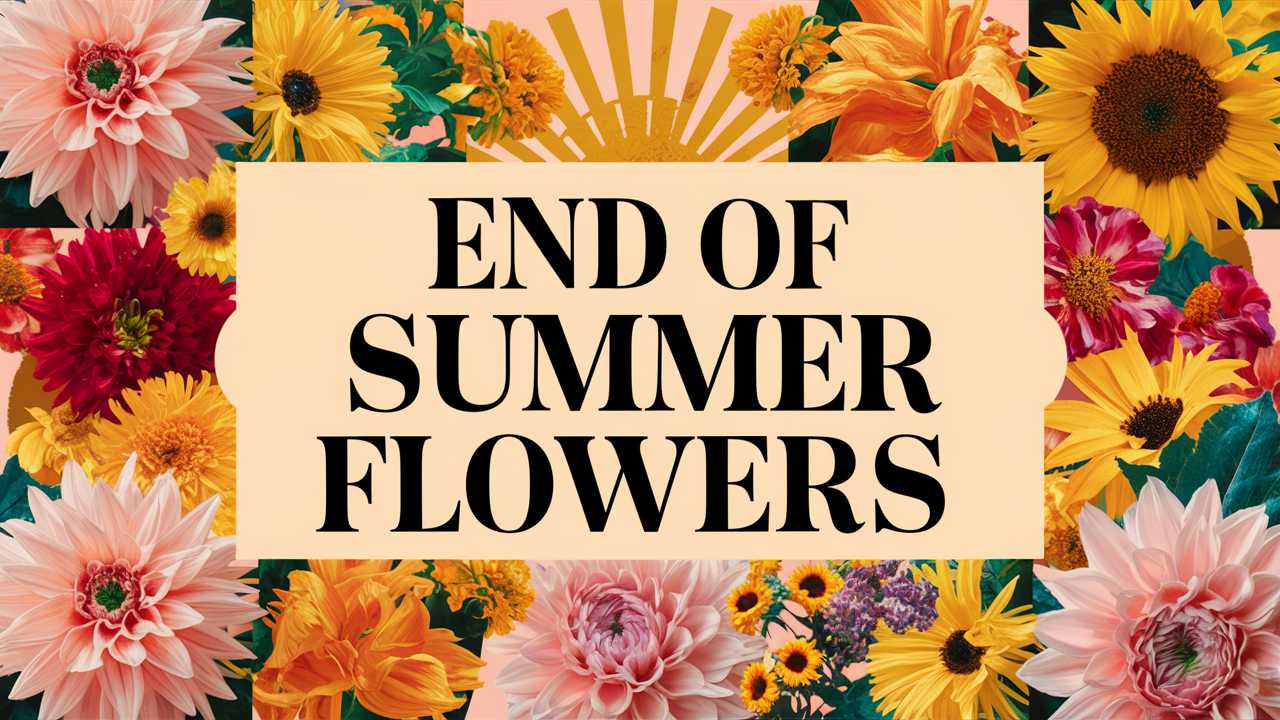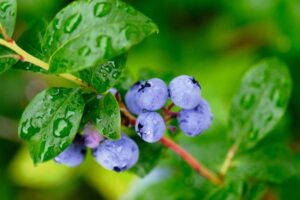In this guide, we will explore some of the most captivating flowers that thrive as the days grow shorter and the air becomes crisp. Each flower tells its own story, showcasing diverse shapes, colors, and characteristics, enriching our gardens during this transitional time.
Cone Flower
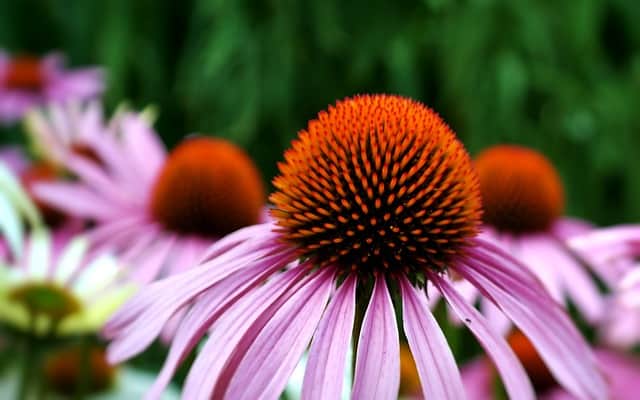
One of the stars of the late summer garden is the Cone Flower (Echinacea). Known for their daisy-like structure, these perennials present bold, spiky centers surrounded by drooping petals that can showcase vibrant hues of pink, purple, and white. Cone Flowers are not just beautiful; they are resilient perennials that attract butterflies and bees, making them a favorite among pollinators.
With a height ranging from 1 to 4 feet, they create a delightful contrast in garden beds, adding vertical interest. Not only are they hardy in various soils, but they thrive in full sunlight, making them an ideal choice for gardeners looking for low-maintenance blooms. Beyond their beauty, Cone Flowers have been celebrated for their medicinal properties, particularly in herbal remedies, where they are believed to support the immune system.
Black-eyed Susans
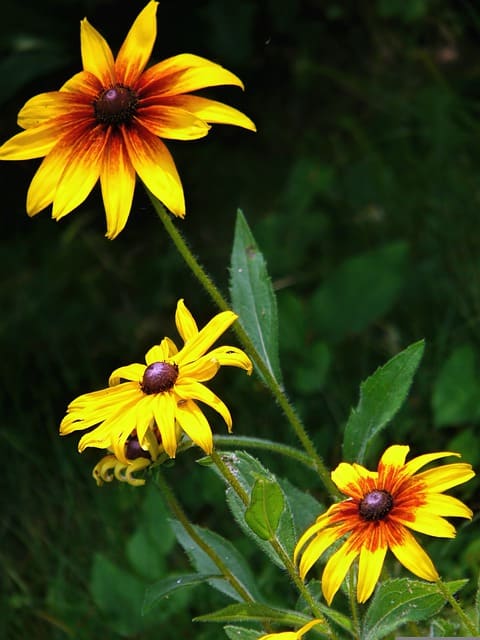
A quintessential symbol of late summer meadows, Black-eyed Susans (Rudbeckia hirta) flaunt their golden-yellow petals and distinctive dark brown center cones. With their cheerful daisylike appearance, these flowers bring a touch of sunshine to any landscape. They are known for their ability to bloom from midsummer to fall, showcasing their sturdy, upright stems that can reach heights up to 3 feet.
Black-eyed Susans are drought-tolerant and thrive in a variety of soil types, making them an easy and attractive choice for gardens. They also have a knack for self-seeding, allowing them to spread and create clusters of color year after year. These flowers are not only visually appealing but also play a vital role in attracting a multitude of beneficial insects, including ladybugs and bumblebees, which are essential for a healthy garden ecosystem.
Bugbane
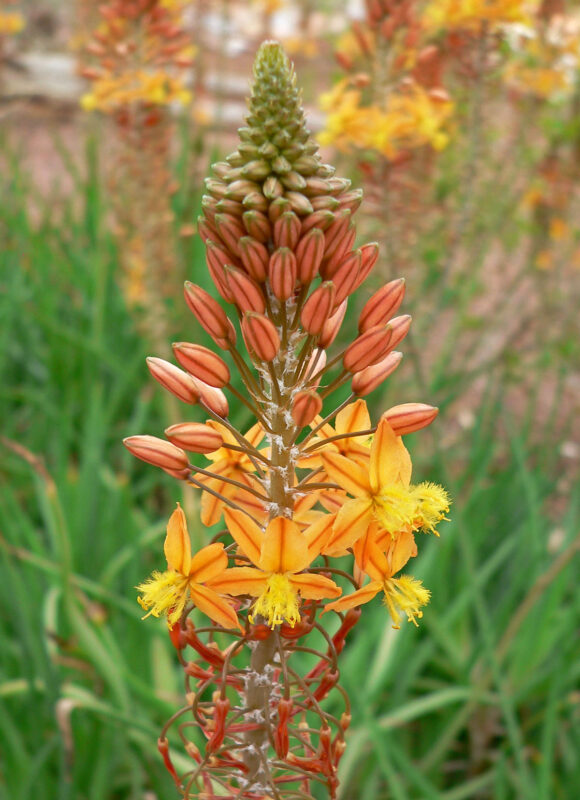
As the summer heat wanes, Bugbane (Cimicifuga racemosa), also known as Actaea, comes into its own with tall, elegant spikes of white flowers. These perennials are often overlooked, yet their unique structure and late bloom time make them a valuable addition to any shaded or woodland garden. Reaching heights of up to 6 feet, Bugbane creates a magnificent vertical presence, particularly effective in the back of borders.
Their lovely, fragrant blossoms emit a sweet aroma that attracts pollinators while providing a beautiful contrast to the surrounding foliage. One of the best features of Bugbane is its adaptability to woodland conditions, thriving in partial to full shade. Its lush foliage also remains attractive long after flowering, adding depth to the garden throughout the fall.
Balloon Flower

The captivating Balloon Flower (Platycodon grandiflorus) earns its name from the way its buds resemble tiny balloons just before they unfurl into star-shaped flowers. Available in colors from deep blue to soft pink, these blooms are a whimsical addition to any late-summer garden. Balloon Flowers typically reach heights between 12 to 24 inches, making them perfect for mid-border planting.
Resilient and easy to grow, Balloon Flowers prefer well-drained soil and thrive in full sun to partial shade. Their unique blooming pattern offers a delightful surprise in the garden, as the balloon-like buds slowly expand and pop open. Not only are these flowers charming; they are also resistant to most pests, making them an excellent choice for beginner gardeners seeking low-maintenance options that provide ample visual intrigue.
Joe Pye Weed
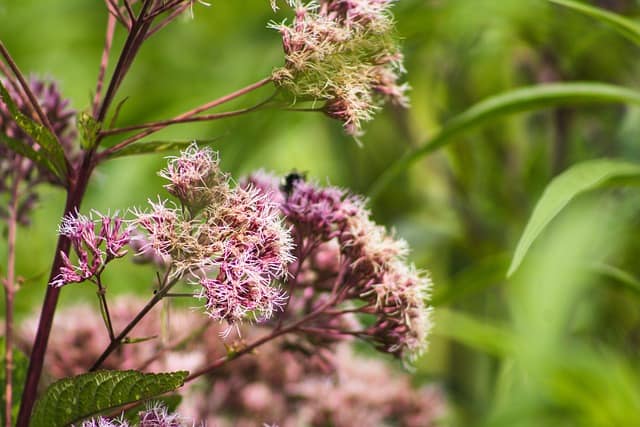
Journeying deeper into gardens, we encounter the majestic Joe Pye Weed (Eutrochium purpureum), also known as Eutrochium maculatum. Reaching towering heights of up to 6 feet, this perennial thrives in damp soil, making it the perfect plant for rain gardens or areas with poor drainage. The plant features large, pointed leaves and clusters of fluffy, pinkish-purple blossoms that bloom from mid-summer into early autumn.
Joe Pye Weed is not only ideal for adding height and structure to borders but also serves as an important nectar source for butterflies and bees during late summer when many other flowers begin to fade. Its tall stature pairs beautifully with other perennials like asters and goldenrods, enhancing the garden’s overall aesthetic while providing essential support for local wildlife. Furthermore, its resilience and adaptability make it a smart choice for naturalized gardens seeking a touch of wild beauty.
Daylilies
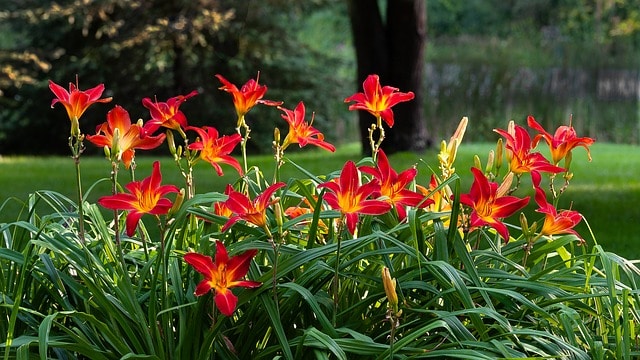
As summer matures, the vibrant and diverse beauty of Daylilies (Hemerocallis) comes to life. With thousands of hybrids available, these perennial stars bloom with remarkable intensity, flaunting an array of colors, shapes, and sizes. Each flower lasts only a day, yet the plant continuously produces new blooms, creating a nearly unending display throughout the late summer into early fall.
Daylilies prefer full sun and well-drained soil, making them an adaptable choice for various garden settings. Beyond their visual appeal, they are incredibly resilient and low-maintenance, thriving even in less-than-perfect conditions. Daylilies are also deer-resistant, which is a significant advantage for gardeners in areas with wildlife. With their robust structure and ability to thrive in multiple climates, these flowers effortlessly brighten up any landscape and create a stunning visual impact.
Sea Holly

One flower that stands out as summer wanes is Sea Holly (Eryngium). With its striking spiky blooms and intricate foliage, these perennials add a distinctive texture to gardens. Known for their silvery-blue hue, Sea Hollies can reach heights of 2 to 3 feet, making an eye-catching display amidst other blooms. They are drought-tolerant and thrive in poor, sandy soils, making them perfectly suited for coastal gardens and xeriscapes.
Beyond their durability, Sea Holly flowers are incredibly appealing to pollinators, particularly bees. Their unique appearance and ability to provide interest even past the blooming stage make them valuable in addition to cut flower arrangements. These flowers fit seamlessly into modern cottage gardens, enhancing their beauty while requiring minimal upkeep—ideal for the busy gardener.
Sunflowers
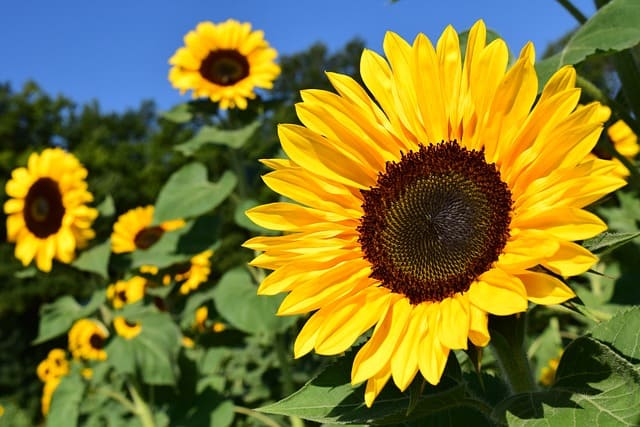
No end-of-summer garden would be complete without the radiant Sunflower (Helianthus annuus). Iconic for their large, face-like blooms, sunflowers symbolize warmth, happiness, and the beauty of nature. These annual giants can grow several feet tall, with some varieties reaching upwards of 12 feet, and bear yellow petals radiating from a dark center filled with seeds.
Sunflowers thrive in full sun, needing ample light and well-drained soil to flourish. Aside from their striking appearance, they play a critical role in ecosystems, attracting numerous pollinators, birds, and beneficial insects. Their seeds provide nourishment for various wildlife and can also serve as a delightful treat for humans.
Beyond the aesthetics and ecological benefits, growing sunflowers can be a joyful and fulfilling experience. Children and adults alike will relish the opportunity to participate in their growth and celebrate their bloom, making them a must-have in gardens across the globe.
Globe Thistle
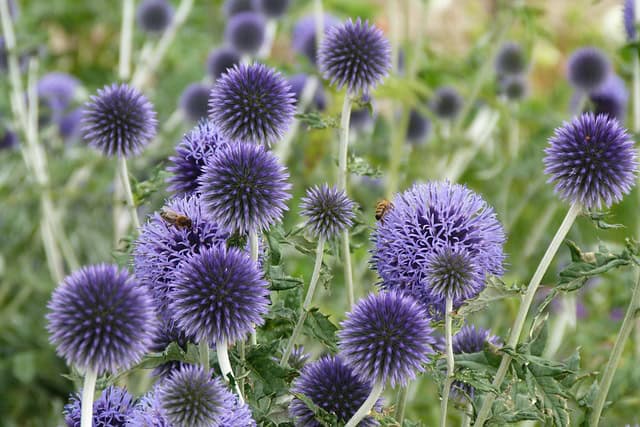
Often overlooked, the Globe Thistle (Echinops) provides a stunning and unique look to late-summer gardens with its round, spiky flower heads that burst into shades of blue and purple. These sturdy perennials bloom from July through September, standing resilient against varying climates and adverse conditions. Their height, typically between 3 to 4 feet, allows them to serve as a fantastic backdrop for shorter flowers and contrasts with softer textures.
Globe Thistles are not only visually striking; they are also a magnet for bees and butterflies, making them an essential addition for pollinator-friendly gardens. Their drought-resistant qualities and low maintenance needs make them a suitable choice for sustainable landscaping practices. As a versatile flower, Globe Thistle can thrive in borders, meadows, or as a part of naturalized areas, effortlessly enriching the garden’s character.
Roses
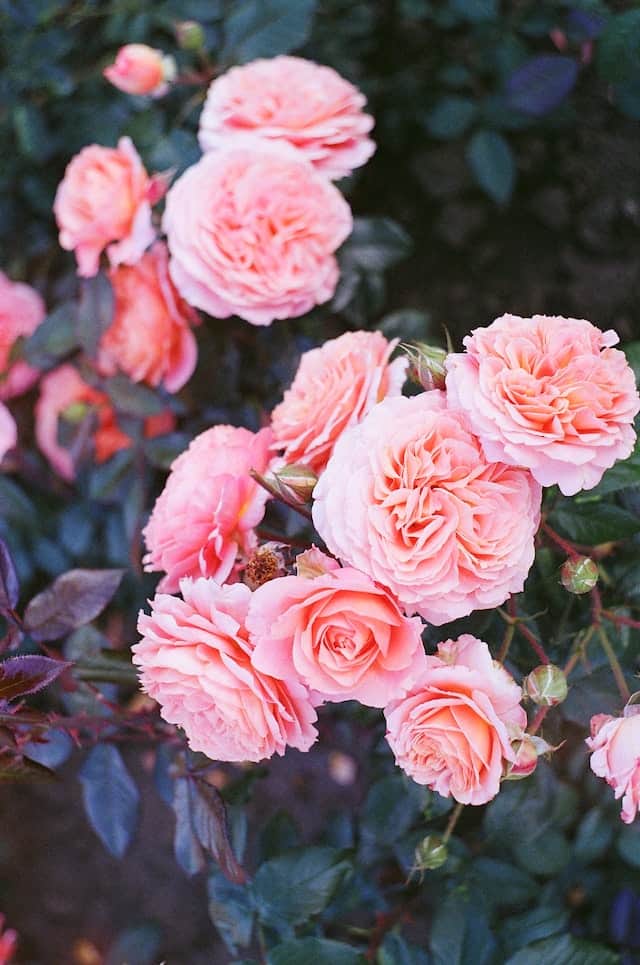
As summer fades, the stalwart Rose (Rosa) continues to captivate with its endless variety and amazing fragrance. Late summer is a prime time for many rose species to bloom anew, filling gardens with splashes of color and sweet scents. From climbing varieties to bushy perennials, roses come in virtually every conceivable shade, providing endless opportunities for creative garden design.
To keep roses at their flourishing best, it is essential to provide adequate sunlight, consistent watering, and appropriate spacing. These perennials are beloved not only for their striking appearance but for their historical and cultural significance. They have inspired poets and gardeners alike for centuries, symbolizing love, beauty, and devotion. Integrating roses into your garden provides a timeless elegance and infuses the season with a sense of grace and romance.
Autumn Joy Sedum
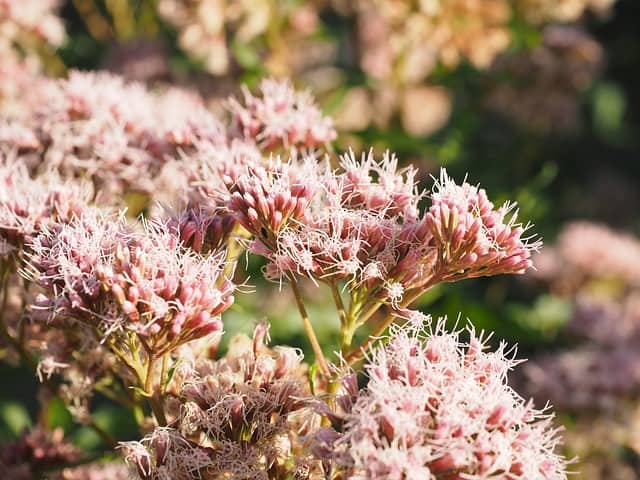
A true champion of late-summer color, Autumn Joy Sedum (Sedum spectabile) features robust, succulent leaves that bloom into large, flat clusters of pink flowers that gradually turn to a rich red as they mature. These hardy perennials usually grow up to 24 inches in height and are admired for their ability to thrive in poor soil conditions, making them ideal for rock gardens or low-maintenance landscapes.
Their late bloom time stretches well into autumn, allowing the flowers to stand out amidst the fading garden. Autumn Joy Sedum attracts pollinators, particularly bees and butterflies, providing a late nectar source when other flowers have begun to decline. Additionally, their unique foliage offers year-round interest, as it retains appealing textures well into the colder months.
Yarrow
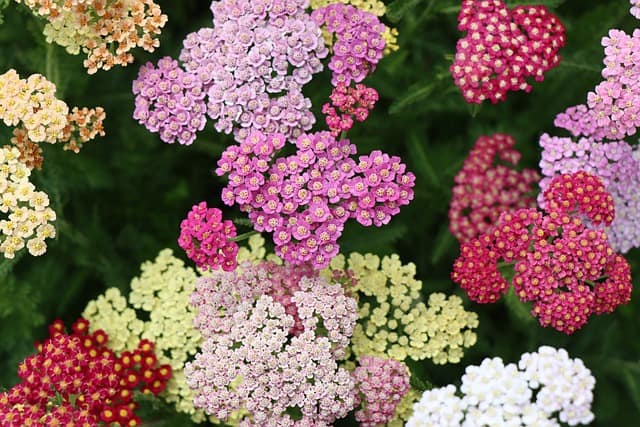
Bold and robust, Yarrow (Achillea millefolium) exemplifies the beauty of the late summer landscape with its feathery foliage and dense clusters of tiny flowers that bloom in various colors, including white, yellow, and pink. This perennial plant, known for its adaptability and medicinal properties, can reach heights of 2 to 3 feet.
Yarrow thrives in full sun and well-drained soil, making it a great choice for gardeners seeking low-maintenance options. Its deep taproot allows it to survive in drought conditions, and it often attracts butterflies, bees, and other beneficial insects to your garden. Beyond its ecological benefits, Yarrow’s vibrant blooms can bring a splash of color to any border or wildflower garden, further enriching the late-summer landscape.
Blazing Stars
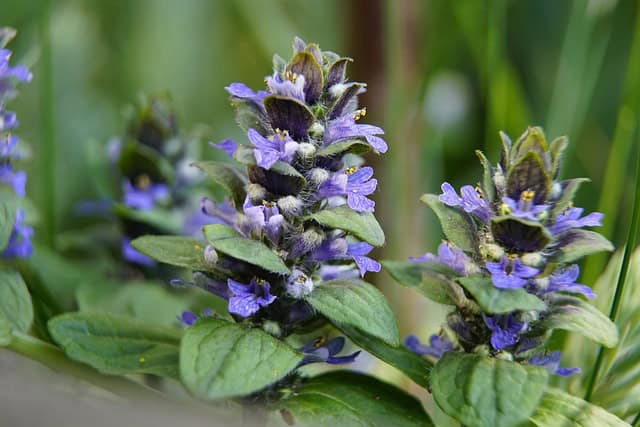
Blazing Stars, also known as Liatris, are truly spectacular as the warm days of late summer usher in dazzling purple flower spikes. The tall, stunning blooms of Blazing Stars can reach heights of up to 4 feet, making them fantastic focal points in the garden. Their fluffy, plume-like flowers are not only visually striking but also highly attractive to bees and butterflies, establishing them as vital players in pollinator gardens.
These perennials thrive in sunny locations and can tolerate various soil types, making them an easy addition to any garden. They establish a beautiful blend with other late-summer bloomers like coneflowers and black-eyed Susans, providing a fantastic burst of color and interest. The dramatic height and texture of Blazing Stars exemplify the richness of late-summer florals while encapsulating the vibrancy of nature.
Asters
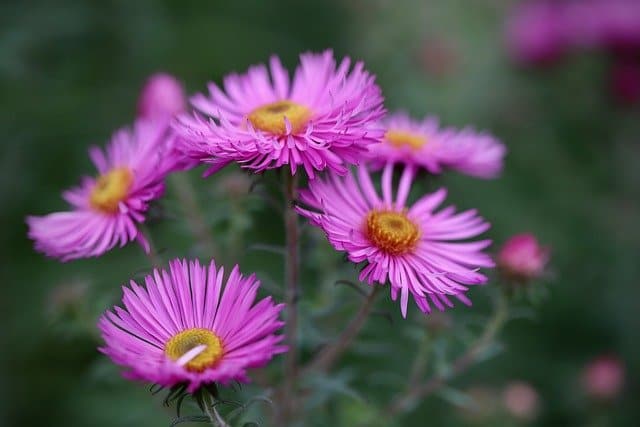
As the warm summer sun dims and autumn edges closer, Asters bloom in a riot of color, marking their importance as one of the final hurrahs of the growing season. Available in shades of purple, blue, pink, and white, these perennial flowers stand tall and proud, often reaching heights of 1 to 3 feet. Their star-shaped blooms last from late summer into the fall, serving as one of the last major food sources for pollinators before colder weather sets in.
Asters thrive best in full sun and well-drained soil, making them relatively easy to care for and a good fit for various garden styles. Whether used in borders, garden beds, or wildflower gardens, Asters add a splash of vibrant color that reinforces the beauty of transitioning to autumn. In many cultures, Asters also symbolize elegance, making them ideal for conveying emotion as the summer days come to a close.
Blanket Flower
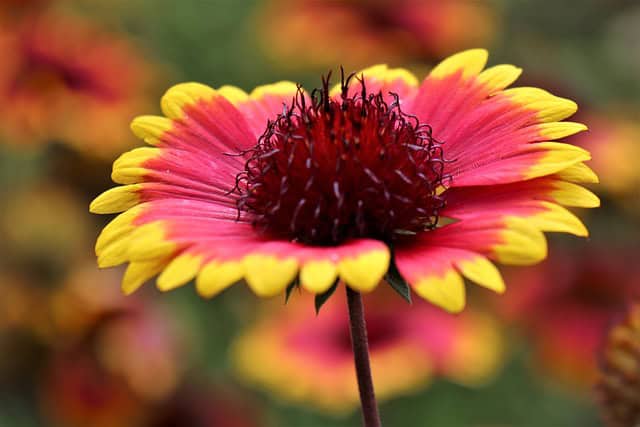
The Blanket Flower (Gaillardia) showcases a vibrant palette of reds, oranges, and yellows in a delightful daisy-like bloom format. Often regarded as one of the most cheerful flowers available, they easily brighten any late-summer landscape. With a height of 1 to 3 feet, Blanket Flowers exhibit resilience, thriving in poor, well-drained soils and full sun, making them an ideal choice for gardeners with various skill levels.
These perennials bloom from early summer into fall, offering prolonged periods of color and beauty. Additionally, their ability to withstand dry conditions and attract pollinators further enhances their garden appeal. Blanket Flowers naturally blend well with other late-season perennials, such as purple coneflowers and black-eyed Susans, creating a delightful tapestry rich in color and texture.
Ligularia
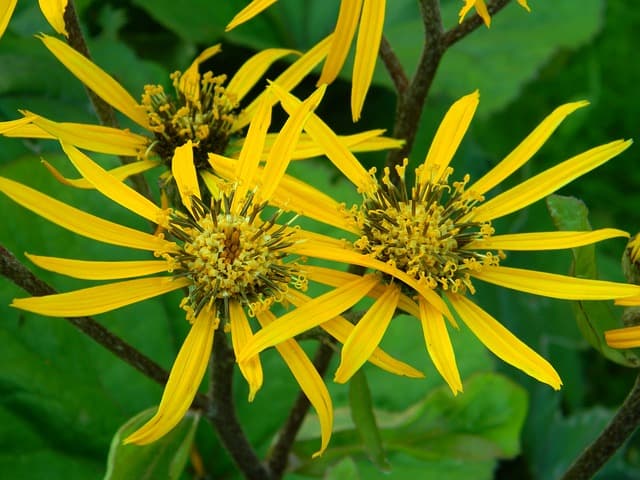
Ligularia is a remarkable addition for those looking to bring boldness into the garden as summer transitions to fall. Known for their large, heart-shaped leaves and tall flower spikes, these perennials can reach heights of up to 4 feet, creating eye-catching focal points. Their yellow flowers bloom from mid-summer through early autumn, often emerging in clusters atop sturdy stems, swaying beautifully in the breeze.
These plants thrive in moist, rich soil and partial to full shade, making them suitable companions for woodland gardens, where more delicate species may struggle. Ligularia’s stunning foliage and unique flowers contribute to an engaging and dynamic garden atmosphere, ensuring that the beauty of summer continues well into the fall.
Phlox
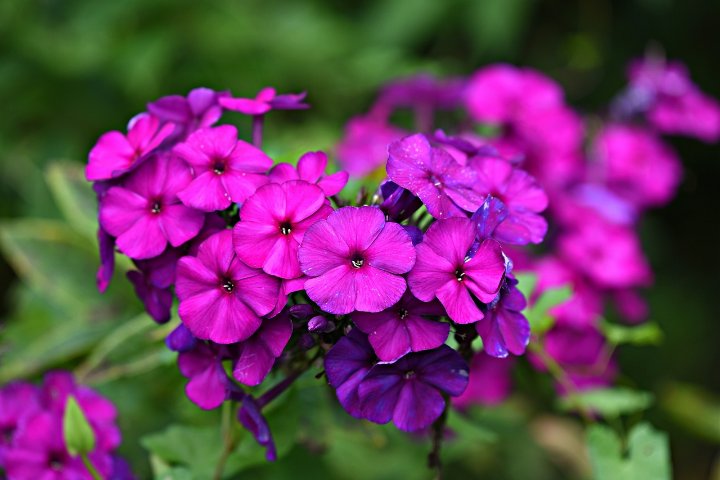
Finally, we cannot overlook the stunning Phlox (Phlox paniculata) as the summer season strides towards its conclusion. With its clusters of fragrant blooms available in a myriad of colors, Phlox attracts attention and admiration from garden visitors and pollinators alike. These tall perennials can grow up to 4 feet and beautifully enliven borders, offering both vertical height and lovely copious blossoms.
Phlox prefers full sun and well-drained soil, providing long-lasting blooms from summer into early fall. With their ability to thrive under diverse conditions, Phlox become an enduring favorite amid perennial gardens. Their delightful fragrance and visuals make them a favorite for many gardening enthusiasts, cementing their status as a beloved staple as summer bids farewell.


